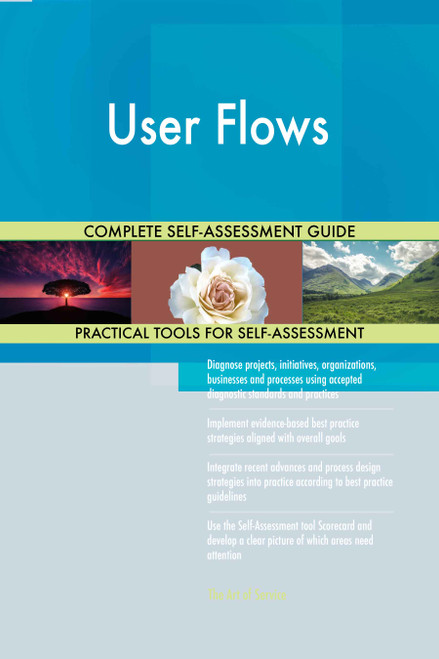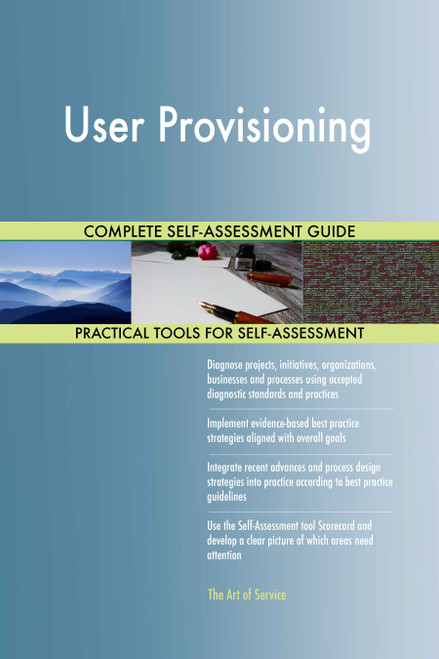Convert goals and requirements into viable shippable solutions which follow and complement your UX strategy and design principles, through appropriate UX Design methodologies, as wireframes, User Flows, and user testing.
More Uses of the User Flows Toolkit:
- Direct: leverage Design Thinking to develop User Stories, User Flows and logic.
- Develop tough UX concepts, defining the User Needs, analyzing the tasks and creating personas, scenarios, storyboards, user cases and User Flows.
- Deliver User Flows, Journey Maps, wireframes and clickable prototypes for product features.
- Control: leverage User Flows and Visual Designs as ui elements.
- Steer: partner with the UX team members to create personas, scenarios, user journeys, story maps, User Flows, etc.
- Analyze current User Flows and identify opportunities for refinement.
- Manage: creation of heuristic audits, User Flows and journey, system mapping, experiential documentation and annotations.
- Govern: continually iterate and refine web landing pages and User Flows to improve performance and drive conversions.
- Provide detailed end end workflows and User Flows illustrating the solution.
- Create design artifacts as User Flows, wireframes, prototypes and UI specs.
- Collaborate with a large team of UX Designers and Graphic Designers to brainstorm, sketch and implement User Flows.
- Guide: expert skills defining and analyzing User Flows and workflows.
- Ensure your portfolio showcases UX/UI artifacts like User Flows, screen designs, and Journey Maps used to articulate your solutions.
- Identify: design User Flows and task flows.
- Provide skills defining and analyzing User Flows and workflows.
- Provide detailed end end workflows, and User Flows illustrating the solution.
- Create and maintain User Flows.
- Be accountable for developing User Flows to help articulate screen flows and system requirements.
- Lead interaction and design ideas using storyboards, User Flows, wireframes and prototypes.
- Steer: proactively identify the need for and initiates new, complex multi step User Flows that impact multiple functions using various design tools e.
- Control: design User Flows, annotated wireframes and other artifacts that bridge the gap between design and development.
- Ensure you can test and validate functionality, User Flows, and Visual Designs.
- Direct: partner with product, developers, and UX Designers to interpret User Flows and wireframes for Interaction Design and development.
- Develop User Flows, wireframes, and interaction features.
- Create wireframe, storyboards, User Flows, and Process Flows to effectively communicate interaction and design ideas.
- Translate complex product requirements into easy and intuitive User Flows.
- Develop: an obsession for creating simple and intuitive User Flows.
- Manage work with Product Owners and designers to turn high level abstract ideas into User Flows and wireframes.
- Devise: prototype and iterate designs to connect and optimize User Flows.
Save time, empower your teams and effectively upgrade your processes with access to this practical User Flows Toolkit and guide. Address common challenges with best-practice templates, step-by-step Work Plans and maturity diagnostics for any User Flows related project.
Download the Toolkit and in Three Steps you will be guided from idea to implementation results.
The Toolkit contains the following practical and powerful enablers with new and updated User Flows specific requirements:
STEP 1: Get your bearings
Start with...
- The latest quick edition of the User Flows Self Assessment book in PDF containing 49 requirements to perform a quickscan, get an overview and share with stakeholders.
Organized in a Data Driven improvement cycle RDMAICS (Recognize, Define, Measure, Analyze, Improve, Control and Sustain), check the…
- Example pre-filled Self-Assessment Excel Dashboard to get familiar with results generation
Then find your goals...
STEP 2: Set concrete goals, tasks, dates and numbers you can track
Featuring 999 new and updated case-based questions, organized into seven core areas of Process Design, this Self-Assessment will help you identify areas in which User Flows improvements can be made.
Examples; 10 of the 999 standard requirements:
- What are the operational costs after User Flows deployment?
- Is there any additional User Flows definition of success?
- How do you measure efficient delivery of User Flows services?
- If your customer were your grandmother, would you tell her to buy what you're selling?
- How do you keep improving User Flows?
- What tools do you use once you have decided on a User Flows strategy and more importantly how do you choose?
- How are you verifying it?
- Have you achieved User Flows improvements?
- What are the clients issues and concerns?
- What User Flows coordination do you need?
Complete the self assessment, on your own or with a team in a workshop setting. Use the workbook together with the self assessment requirements spreadsheet:
- The workbook is the latest in-depth complete edition of the User Flows book in PDF containing 994 requirements, which criteria correspond to the criteria in...
Your User Flows self-assessment dashboard which gives you your dynamically prioritized projects-ready tool and shows your organization exactly what to do next:
- The Self-Assessment Excel Dashboard; with the User Flows Self-Assessment and Scorecard you will develop a clear picture of which User Flows areas need attention, which requirements you should focus on and who will be responsible for them:
- Shows your organization instant insight in areas for improvement: Auto generates reports, radar chart for maturity assessment, insights per process and participant and bespoke, ready to use, RACI Matrix
- Gives you a professional Dashboard to guide and perform a thorough User Flows Self-Assessment
- Is secure: Ensures offline Data Protection of your Self-Assessment results
- Dynamically prioritized projects-ready RACI Matrix shows your organization exactly what to do next:
STEP 3: Implement, Track, follow up and revise strategy
The outcomes of STEP 2, the self assessment, are the inputs for STEP 3; Start and manage User Flows projects with the 62 implementation resources:
- 62 step-by-step User Flows Project Management Form Templates covering over 1500 User Flows project requirements and success criteria:
Examples; 10 of the check box criteria:
- Cost Management Plan: Eac -estimate at completion, what is the total job expected to cost?
- Activity Cost Estimates: In which phase of the Acquisition Process cycle does source qualifications reside?
- Project Scope Statement: Will all User Flows project issues be unconditionally tracked through the Issue Resolution process?
- Closing Process Group: Did the User Flows project team have enough people to execute the User Flows project plan?
- Source Selection Criteria: What are the guidelines regarding award without considerations?
- Scope Management Plan: Are Corrective Actions taken when actual results are substantially different from detailed User Flows project plan (variances)?
- Initiating Process Group: During which stage of Risk planning are risks prioritized based on probability and impact?
- Cost Management Plan: Is your organization certified as a supplier, wholesaler, regular dealer, or manufacturer of corresponding products/supplies?
- Procurement Audit: Was a formal review of tenders received undertaken?
- Activity Cost Estimates: What procedures are put in place regarding bidding and cost comparisons, if any?
Step-by-step and complete User Flows Project Management Forms and Templates including check box criteria and templates.
1.0 Initiating Process Group:
- 1.1 User Flows project Charter
- 1.2 Stakeholder Register
- 1.3 Stakeholder Analysis Matrix
2.0 Planning Process Group:
- 2.1 User Flows Project Management Plan
- 2.2 Scope Management Plan
- 2.3 Requirements Management Plan
- 2.4 Requirements Documentation
- 2.5 Requirements Traceability Matrix
- 2.6 User Flows project Scope Statement
- 2.7 Assumption and Constraint Log
- 2.8 Work Breakdown Structure
- 2.9 WBS Dictionary
- 2.10 Schedule Management Plan
- 2.11 Activity List
- 2.12 Activity Attributes
- 2.13 Milestone List
- 2.14 Network Diagram
- 2.15 Activity Resource Requirements
- 2.16 Resource Breakdown Structure
- 2.17 Activity Duration Estimates
- 2.18 Duration Estimating Worksheet
- 2.19 User Flows project Schedule
- 2.20 Cost Management Plan
- 2.21 Activity Cost Estimates
- 2.22 Cost Estimating Worksheet
- 2.23 Cost Baseline
- 2.24 Quality Management Plan
- 2.25 Quality Metrics
- 2.26 Process Improvement Plan
- 2.27 Responsibility Assignment Matrix
- 2.28 Roles and Responsibilities
- 2.29 Human Resource Management Plan
- 2.30 Communications Management Plan
- 2.31 Risk Management Plan
- 2.32 Risk Register
- 2.33 Probability and Impact Assessment
- 2.34 Probability and Impact Matrix
- 2.35 Risk Data Sheet
- 2.36 Procurement Management Plan
- 2.37 Source Selection Criteria
- 2.38 Stakeholder Management Plan
- 2.39 Change Management Plan
3.0 Executing Process Group:
- 3.1 Team Member Status Report
- 3.2 Change Request
- 3.3 Change Log
- 3.4 Decision Log
- 3.5 Quality Audit
- 3.6 Team Directory
- 3.7 Team Operating Agreement
- 3.8 Team Performance Assessment
- 3.9 Team Member Performance Assessment
- 3.10 Issue Log
4.0 Monitoring and Controlling Process Group:
- 4.1 User Flows project Performance Report
- 4.2 Variance Analysis
- 4.3 Earned Value Status
- 4.4 Risk Audit
- 4.5 Contractor Status Report
- 4.6 Formal Acceptance
5.0 Closing Process Group:
- 5.1 Procurement Audit
- 5.2 Contract Close-Out
- 5.3 User Flows project or Phase Close-Out
- 5.4 Lessons Learned
Results
With this Three Step process you will have all the tools you need for any User Flows project with this in-depth User Flows Toolkit.
In using the Toolkit you will be better able to:
- Diagnose User Flows projects, initiatives, organizations, businesses and processes using accepted diagnostic standards and practices
- Implement evidence-based best practice strategies aligned with overall goals
- Integrate recent advances in User Flows and put Process Design strategies into practice according to best practice guidelines
Defining, designing, creating, and implementing a process to solve a business challenge or meet a business objective is the most valuable role; In EVERY company, organization and department.
Unless you are talking a one-time, single-use project within a business, there should be a process. Whether that process is managed and implemented by humans, AI, or a combination of the two, it needs to be designed by someone with a complex enough perspective to ask the right questions. Someone capable of asking the right questions and step back and say, 'What are we really trying to accomplish here? And is there a different way to look at it?'
This Toolkit empowers people to do just that - whether their title is entrepreneur, manager, consultant, (Vice-)President, CxO etc... - they are the people who rule the future. They are the person who asks the right questions to make User Flows investments work better.
This User Flows All-Inclusive Toolkit enables You to be that person.
Includes lifetime updates
Every self assessment comes with Lifetime Updates and Lifetime Free Updated Books. Lifetime Updates is an industry-first feature which allows you to receive verified self assessment updates, ensuring you always have the most accurate information at your fingertips.








